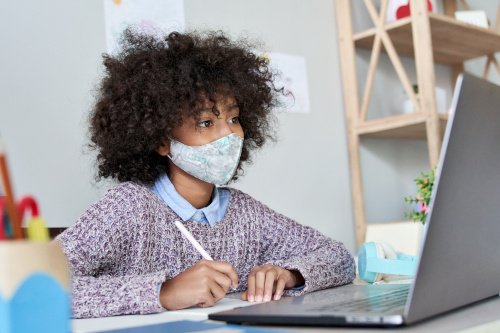
March marks two years since the COVID-19 pandemic forced nationwide classroom closures. And in those two years, educators and students have learned to make virtual learning work for them, they’ve shared how equity gaps impact their ability to teach and learn, and they’ve proven how resilient they are despite ongoing struggles.
eSchool News asked educators and industry experts to share some of their valuable post-COVID learning insights, lessons learned, and next steps for their students, schools, districts, and the edtech industry as a whole.
Here’s what they said about post-COVID learning:
Mark T. Bedell, Ed.D., Superintendent, Kansas City Public Schools
What has been your district’s biggest accomplishment since March 2020?
Last month, Kansas City Public Schools received full accreditation from the Missouri State Board of Education for the first time in 20 years. We’ve been striving for full accreditation the six years I’ve been superintendent, and we made it happen even as a global pandemic disrupted learning for our students and all students. I’m just so proud of my team for the way they showed up for students last year and continue to show up this year. It’s still tough, but we’re getting through it together, as a school district and as a community.
What have you learned from pandemic learning?
If we truly want to prepare students for life after high school, we’re going to have to change high school. We’ve been doing school the same way for a century, and it no longer works for many students and families. So many of our high schoolers got jobs last year to support their families, jobs they couldn’t afford to give up when we reopened schools for in-person learning. This fall, we launched an Evening Academy program to keep students who needed to work in school. But the model is flexible enough to work for credit recovery, too. And we have a few students who are taking classes in the evening to make room in their schedules for advanced coursework during the school day. Don’t you love that? We need more paths to graduation, not less.
What will you do with those lessons learned?
Right now, we are working with our students, parents, teachers and community on Blueprint 2030, a strategic plan for Kansas City Public Schools. Their feedback is going to help us design a more equitable and flexible school system that meets the social, emotional and academic needs of students. As superintendent, I get to see the great things happening in our schools every day. But those great things can’t only exist in pockets. The pandemic has us rethinking what’s possible, and I can’t wait to see where these community conversations lead us.
David Adams, Chief Executive Officer, The Urban Assembly
What has been your school/district’s biggest accomplishment since March 2020?
Our biggest accomplishment has been maintaining strong learning environments that integrate social emotional and instructional supports to engage student learning through remote, hybrid, and in-person formats. For example, throughout the pandemic and recovery eras, Urban Assembly schools maintained an emphasis on social emotional skill development that helped students cultivate independent learning approaches, maintain connections to their peers and teachers, and set and achieve goals. We’re going to continue to think through how these elements of learning get named and integrated directly into the core curriculum so that students and teachers have access to the language and the concepts it evokes when solving problems in and out of the classroom.
What is your biggest take-away—what have you learned from pandemic learning?
The ability to watch student engage in tasks, struggle, succeed, and interact with their peers as well as instructional concepts is essential to the learning process. Artifacts make thinking visible, but observing students in the process of learning is a key input to decisions about pacing, differentiation, and questioning loops that need to be reprioritized as we invest in student growth. It’s a doubling down on the emphasis on learning versus teaching. How do students learn? Where do they struggle? How do we raise up misconceptions? How do we create instructional formats that allow students to exchange, refine, and elevate ideas with each other around a common problem set? We’re going to continue to focus on learning, which is to say, focus on how students integrate new concepts and information into already existing understandings of themselves and the world as well as develop whole new insights into the world around us. We re-learned the fundamental truth that teaching is as much about watching and listening as it is about delivering content.
What will you do with those lessons learned, at the school level or the district/state level?
We’re reinvesting in the kinds of structures that drive insight. Things like small groups, discourse, and argument development and defense. We hope that as the pandemic effects ease, as well the corresponding constraints around social distancing, the return to normal allows us to reinvest in the type of instructional interactions the facilitate social emotional and academic development of our students. Lastly, we’re also looking deeply into understanding what information is included in students’ grades. We’re reorienting around the role of formative assessment and how that information is fed back to students to help them develop self-awareness and facilitate goal setting that supports their efficacy around learning. There are many different ways to know a student. Assessment is just one of them, so placing different forms of assessment in the right sequence of learning is an investment that we are making as a network.

